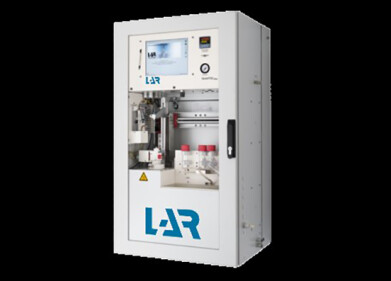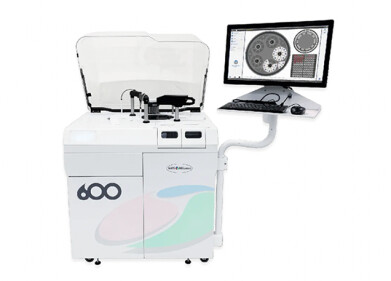Wastewater analysis
Automation of nitrogen removal from wastewater enables compliance with limit values, stable plant operation and optimises energy consumption
May 11 2021
Optimum nitrogen reduction requires optimum coordination of the nitrification and denitrification processes. On the one hand, this involves controlling oxygenation during sludge activation in accordance with the load and the individual limit values. On the other hand, it involves coordinating the duration of the nitrification and denitrification phases. Endress + Hauser’s Liquiline Control system will assist you here, ensuring that nitrogen is removed and optimising the amount of energy required to do so.
The main components of nitrogen are ammonium and nitrate. In the biology of a wastewater treatment plant, bacteria converts the ammonium to nitrate through the addition of oxygen (nitrification). This continues until there is (almost) no ammonium left.
Other bacteria then convert the nitrate to molecular nitrogen (denitrification). This simply escapes into the atmosphere and is therefore eliminated from the wastewater. Incidentally, no more oxygen is added during the denitrification process. This to ensure that the bacteria consume the oxygen present in the nitrate.
The key issue is to establish when and how much oxygen is required for nitrification in order to achieve an optimum level of nitrogen reduction. The oxygen is injected into the aeration basin using compressors. These require enormous amounts of electricity – up to 70% of the entire energy requirement of a plant. If too much oxygen is added, energy and money are wasted. If too little is added, the outlet values deteriorate.
The Liquiline Control system can control the reduction of ammonium and nitrate based on the influent load. Depending on the nutrient concentration, the system controls the influx of air into the aeration basin, e.g. by regulating the speed of the compressors. This is regardless of whether the biological phase is operated continuously or intermittently.
The measured values taken into account are oxygen in the nitrification phase, ammonium (and nitrate, if necessary) in the transition zones as well as the quantity of wastewater currently flowing through the wastewater treatment plant. The transition zones include the zones between the nitrification and denitrification phases as well as the zones at the inlet and outlet of the biological phase.
The target oxygen value, and therefore the influx of air into the aeration basin, is adapted dynamically to fluctuations in the influent load. At night time, during low-load phases, only a small amount of air is injected; during load peaks, such as surges during wet weather, more air is injected. In the case of intermittently operated plants, minimum times or the nitrification and denitrification phases are also taken into account.
The automatic adjustment of the oxygen target value in your aeration basin ensures ideal nitrification and denitrification times and simultaneous control of several biological phases that can be operated on a continuous or intermittent basis. For safe compliance with your prescribed outlet values - even during high load peaks, high transparency and easy handling of the nitrogen removal process and energy optimised operation of your wastewater treatment plant, the Liquiline System is an indispensable tool.
Digital Edition
IET 35.2 March
April 2025
Air Monitoring - Probe Sampling in Hazardous Areas Under Extreme Conditions - New, Game-Changing Sensor for Methane Emissions - Blue Sky Thinking: a 50-year Retrospective on Technological Prog...
View all digital editions
Events
Jun 08 2025 Denver, CO, USA
Jun 09 2025 Raleigh, NC, USA
Jun 10 2025 Toulouse, France
Jun 11 2025 Copenhagen, Denmark
Jun 17 2025 Guangzhou, China
















.jpg)







